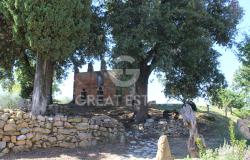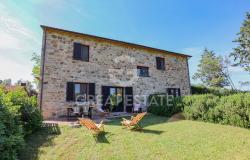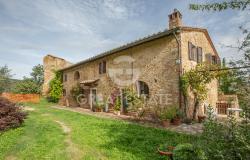Well .................
Submitted by alan h on Thu, 01/12/2012 - 18:20In reply to A newbie all over again! by Annec
Look through this lot - there are a few bread machine recipes in here;- http://allrecipes.co.uk/recipes/tag-5702/italian-bread-recipes.aspx
Different breads
Submitted by Blue and Mon on Fri, 01/13/2012 - 05:05In reply to A newbie all over again! by Annec
My Panasonic breadmaker has an "Italian" option on the setting, which takes half an hour longer than the normal white setting. I've tried various recipes for Italian bread but I'm sorry to say the very best I've found is to buy a Wrights ciabatta breadmix in a little packet, like a mini bag of flour. It only needs water and olive oil added to it, but on that Italian setting it makes a really lovely light and airy ciabatta loaf. You mention the "heavy bread" you buy in Italy. Isn't it interesting how bread varies so much - how practically the same ingredients can be made to produce such a wide range of different regional breads? We go to Como in the north and all the bread in the shops seems to be light.
I was wondering more about the flour types in Italy
Submitted by FromNowOn on Fri, 01/13/2012 - 08:00In reply to Different breads by Blue and Mon
Yes, my machine is Panasonic too. I use the Italian option and the bread is very good and crisp. (My machine has a crisper crust button). What I like about the bread I buy in Italy is the lovely, crunchy, thick crust, and the lightness of the bread inside. I suppose I could make the crust of my bread machine bread even more crisp by placing the cooked loaf in the oven to finish off, but that defeats the convenience of having a bread maker. I suppose what I was wondering about is the kinds of flour that are available in the supermarkets in Italy and how they might produce different texture breads. Do they vary from the flour types available in the UK? I have never looked at flour types when shopping in Italy. Here I use wheat strong white, strong brown, wholemeal, granary, and seeded.
Flours
Submitted by Blue and Mon on Fri, 01/13/2012 - 10:43In reply to A newbie all over again! by Annec
Gosh, I've just spent about half an hour reading about how in Italy flour is classified based on the yield from milling! Here's a useful extract: "In Italy we classify flour by the extraction percentage: so you have wholewheat, then 2, then 1, then 0 and lastly 00, the more refined. This is what you would use for cakes, or pasta, but also fine bread and rolls. However, refining is one thing, proteins quite another, so there can be low gluten 00 and high gluten 00. The latter is what you would use for e.g. panettone and pandoro, that need a long fermentation times, while the former is what you would use for crostata and biscotti. If you want to be more precise, in Europe in general and in Italy in particular the thing to look for are the W and P/L ratios." Also, have a look at this link to the blog by the woman who wrote the above quote: http://eat-drink-man-woman-blog.blogspot.com/2008/06/we-are-addicted-to-white-stuff.html ...Or has that just confused us all further?!
ITALIAN BREAD
Submitted by Neil on Fri, 01/13/2012 - 11:38In reply to A newbie all over again! by Annec
Two old guys, one 80 and one 87, were sitting on their usual park bench one morning. The 87 year old had just finished his morning jog and wasn't even short of breath. The 80 year old was amazed at his friend's stamina and asked him what he did to have so much energy. The 87 year old said, "well I eat Italian bread every day. It keeps your energy level high and you'll have great stamina with the ladies." So, on the way home, the 80 year old stops at the bakery. As he was looking around, the lady asked if he needed any help. He said, "Do you have any Italian bread?" He said, "Yes, there's a whole shelf of it, would you like some?" He said, "I want 5 loaves." She said , "My goodness, 5 loaves...it'll get hard." He replied, "Does everybody in the world know about this Italian bread but ME"?
In reply to A newbie all over again! by Annec
I think there may be more to it than just the type of flour. The ciabatta recipe I use (to make it in the oven) has me spraying the inside of the oven every ten minutes for a half an hour while the bread is baking, and that seems to get the crust very hard and crisp.
Try this one
Submitted by simonandjo on Sat, 01/14/2012 - 03:49In reply to A newbie all over again! by Annec
Pane casereccio (Homemade Bread) http://memoriediangelina.blogspot.com/2012/01/pane-casereccio-homemade-bread.html
What a wonderful blog.
Submitted by craftfairy on Sun, 01/22/2012 - 13:01In reply to A newbie all over again! by Annec
What a wonderful blog.
Submitted by craftfairy on Sun, 01/22/2012 - 13:01In reply to A newbie all over again! by Annec
AN OLD THREAD
Submitted by Gala Placidia on Mon, 01/23/2012 - 00:57In reply to A newbie all over again! by Annec
This thread from the old Forum may be helpful: http://www.italymag.co.uk/forums/general-chat-about-italy/5867-bread-making.html
Success with every loaf, but Panettoni did not work
Submitted by FromNowOn on Mon, 01/23/2012 - 06:56In reply to A newbie all over again! by Annec
Thank you everybody for the suggestions to progress my breadmaking in my Christmas Panasonic bread machine. I have been making a new type of loaf every day, and can't help cutting each one in half and passing it on to a member of my family to try. All recipes have come out extremely satisfactorily, with the exception of the Panettoni recipe given in the Panasonic book. I followed the instructions closely, but the result was nothing like the Italian-made Panetone I have enjoyed. In fact, I ended up throwing most of it in the bin. I did not realise how much butter went into making Panettoni - nice, but so unhealthy, just like cake! I have decided to buy a basic bread machine for the apartment in Italy for use when our lovely shop bought Italian bread has dried up and there is no time to run down to the bakery. Having read the bread machine blog on the old forum, I will remember to take out some dried yeast with me for the store cupboard.
bread, bread and more bread
Submitted by Emanuele on Mon, 01/23/2012 - 14:25In reply to Success with every loaf, but Panettoni did not work by FromNowOn
DON'T THROW AWAY THE PANETTONE!!!
Submitted by Gala Placidia on Mon, 01/23/2012 - 17:36In reply to A newbie all over again! by Annec
I agree ...................
Submitted by alan h on Mon, 01/23/2012 - 18:08In reply to A newbie all over again! by Annec
We do the same, Alan!!! And
Submitted by Gala Placidia on Mon, 01/23/2012 - 23:44In reply to A newbie all over again! by Annec
I've really enjoyed reading this thread!
Submitted by Lorraine on Tue, 01/24/2012 - 08:40In reply to A newbie all over again! by Annec
Don't add bananas
Submitted by FromNowOn on Tue, 01/24/2012 - 10:30In reply to I've really enjoyed reading this thread! by Lorraine
I am sure you'll have lots of fun with your bread maker Lorraine. After the first few loaves I got my confidence and started experimenting. I added ripe bananas - that did not work too well. The bread came out a bit heavy and squidgey, although the crust was nice and crisp! The addition I like best is sunflower seed - lovely and nutty and chewy. Currently I have about six flour types on the go, and all sorts of nuts and fruits. My next loaf will have pesto and pine nuts in it, and I want to make the onion and cheese loaf too. I am looking forward to seeing what flour types they sell in Italy. On the old forum someone suggested buying flour direct from the local bakery.















